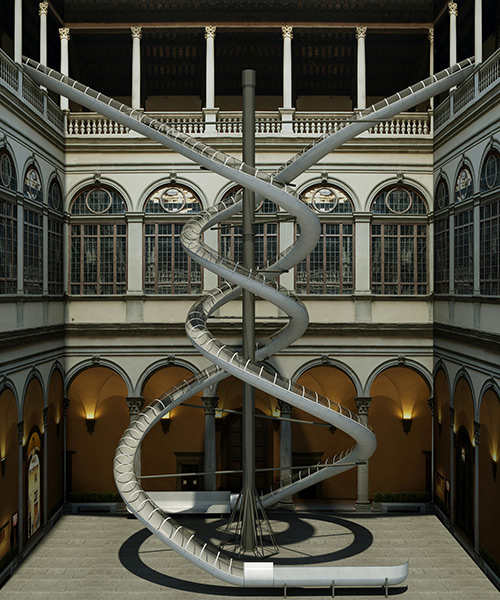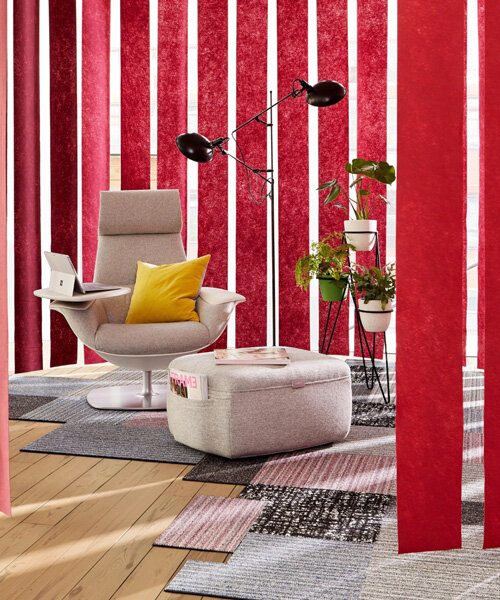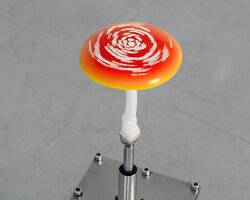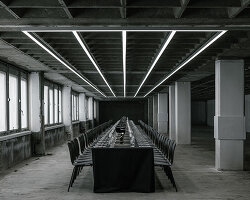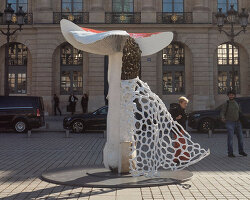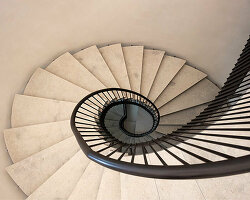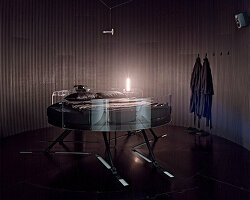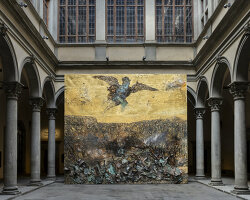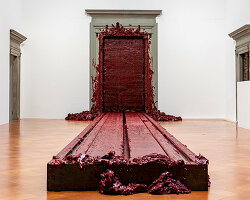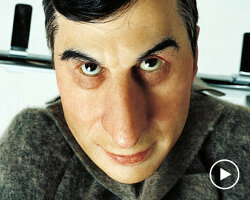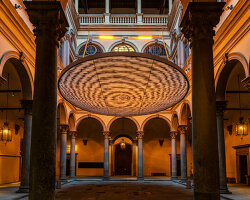this spring-summer, palazzo strozzi — florence’s famed renaissance palace — will host a site-specific installation devised by german artist carsten höller and plant neurobiologist stefano mancuso. ‘the florence experiment’ comprises a pair of monumental, intertwined slides that spiral visitors twenty meters downward from the second floor terrace to the courtyard. before sliding, participants will be handed a plant to accompany them, which — upon exiting — will be passed through a laboratory where scientists will measure its photosynthetic parameters and volatile molecules. this ‘live’ analysis will investigate the impact of human emotion on plant growth, as triggered by the experience of the descending visitor.
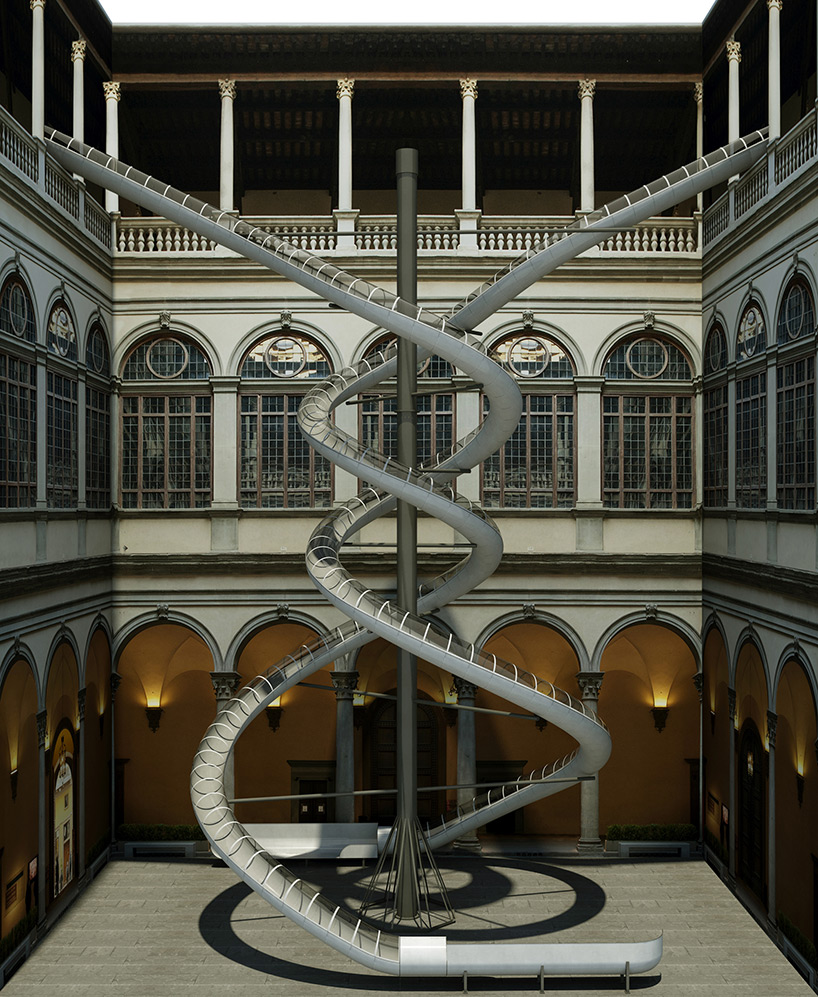
‘the florence experiment’ comprises a pair of monumental, intertwined slides
rendering by michele giuseppe onali
curated by fondazione palazzo strozzi director general arturo galansino, höller and mancuso’s ‘florence experiment’ interestingly connects the palazzo’s internal and external spaces in a way that seeks to further our understanding of ecology. the laboratory will also host a cinema — one screening excerpts from famous comedies, the other from renowned horror films. the audiences’ diverging reactions will produce different volatile chemical compounds, which will make their way through a system of pipes and tubes to the façade of the palazzo. the impact of these compounds will affect the growth of wisteria plant vines arranged to climb up a series of wires on the façade. the impact of the public’s horror or happiness is expected to visibly influence the direction in which the plants grow.
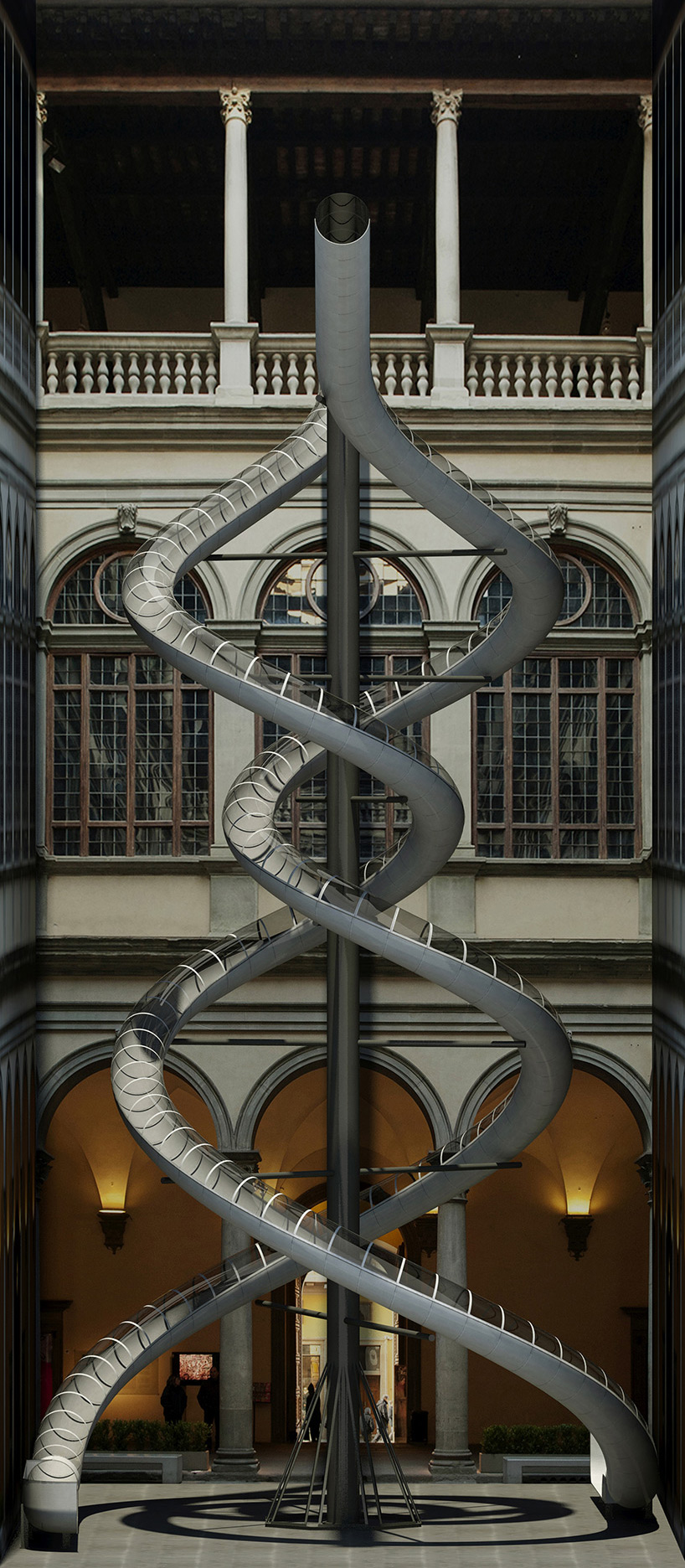
internal and external spaces seek to further our understanding of ecology
by turning palazzo strozzi’s façade and courtyard into areas of both scientific and artistic experimentation, ‘the florence experiment’ seeks to generate new understandings of human interactions with the natural world.
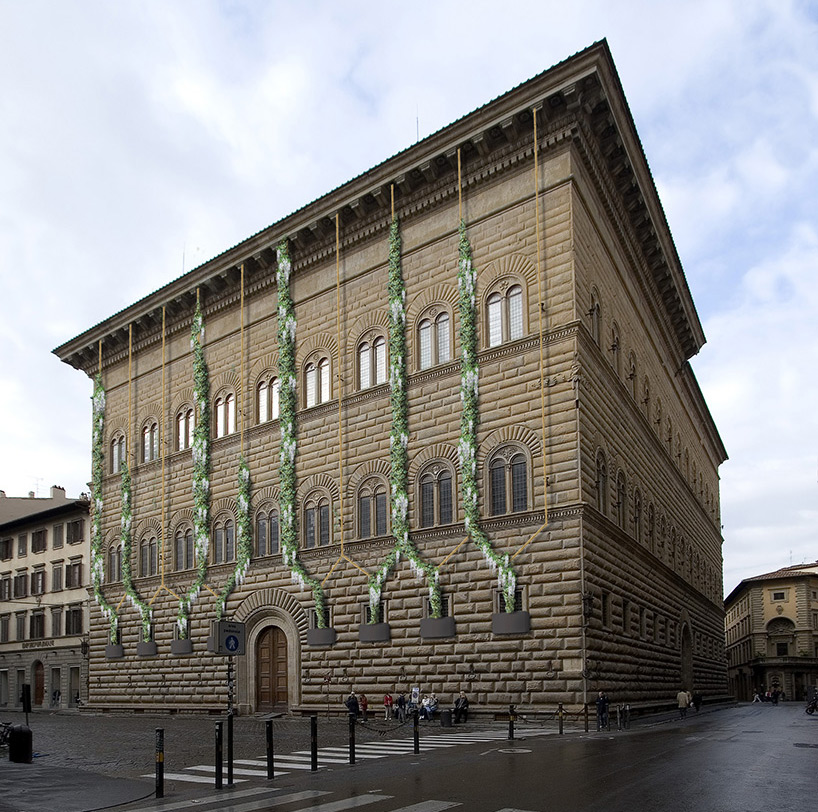
palazzo strozzi’s façade and courtyard are turned into areas of scientific and artistic experimentation
